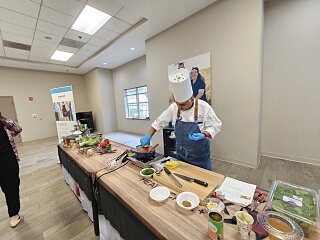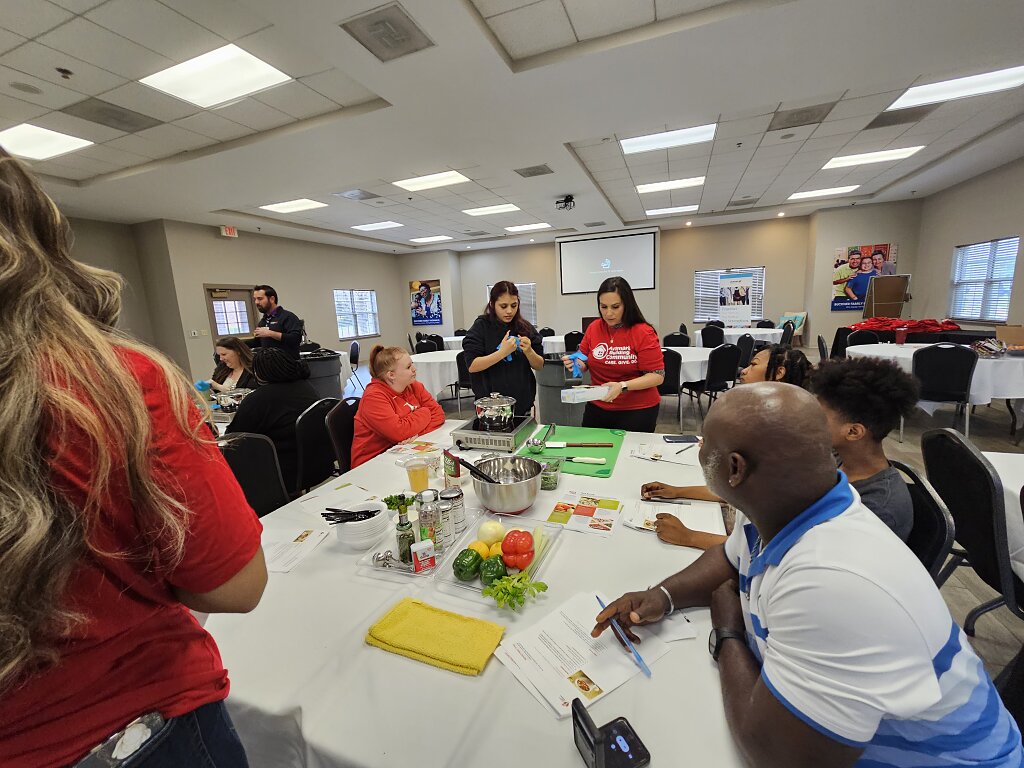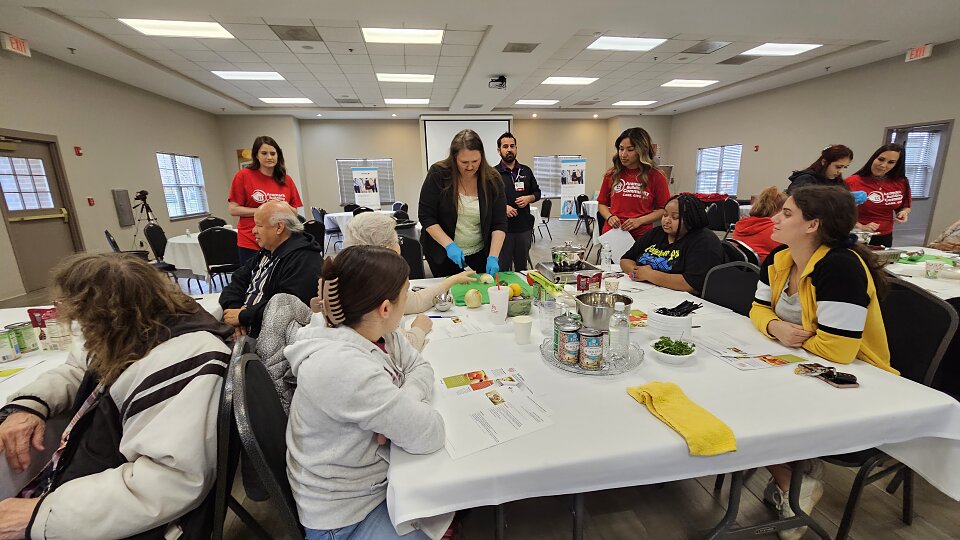Dallas cooking class hosted by Aramark and Buckner offers healthy meal ideas on a budget
Aramark and Buckner International offered a cooking class for those who are a part of Buckner programs in Dallas. The event, which took place during National Nutrition Month, taught participants important tips to “Building a Healthy Menu on a Budget.” Families from Buckner Family Pathways®, NextStep, foster care and through the Buckner Center for Humanitarian Aid gathered on March 30 to create healthy recipes and learn skills to take home with them.
Aramark’s Healthy for Life 20 by 20 initiative with the American Heart Association aims at improving “the health of all Americans 20% by 2020.” To do this, Aramark has created a curriculum meant to not only share healthy recipes but inspire families to get excited to prepare healthy foods. The curriculum is taught through different clubs or classes called Feed Your Potential 365, where chefs and dietitians “share healthy tips and recipes.”
Aramark’s clinical dietitian, Holly McStravick, and Baylor Scott & White’s Regional Executive Chef, Anupam “AJ” Joglekar, started the class by acknowledging that while prices of ingredients continue to rise, that doesn’t mean people can’t make healthy and delicious meals on a budget.
“We want to help the community prevent cardiovascular disease and hospital visits by presenting cost-friendly and healthy meals with items they can find at the grocery store,” McStravick said. “These are options that are available for most people.”
 The class was divided into groups, where everyone had the opportunity of doing a few steps of a recipe and once the dish was done, they would share the meal. With ingredients provided by Aramark and two hours together, the whole class prepared spinach bean soup and black-eyed pea, corn and rice salad.
The class was divided into groups, where everyone had the opportunity of doing a few steps of a recipe and once the dish was done, they would share the meal. With ingredients provided by Aramark and two hours together, the whole class prepared spinach bean soup and black-eyed pea, corn and rice salad.
“A lot of people think because they don’t have a protein like beef or chicken, they won’t enjoy their meal, but we want to show that you don’t have to have a protein in order to have a good meal,” Joglekar noted. “You can actually get enough nutrition from beans, rice, peppers, that you don’t need to have a [meat] protein to make a good and healthy meal.”
Today’s economy can cause stress when it comes to the cost of ingredients.
“These recipes are to show that you don’t have to buy a [meat] protein, you can choose healthier options, and you don’t have to spend a lot at the store to enjoy a good meal with your family,” he continued.
Another benefit is the convenience of these recipes is their quick preparation. In a culture where everything is so fast-paced, people often don’t have the option to spend a lot of time in the kitchen. But Joglekar explained these recipes are easier to make and are done with ingredients people can purchase without breaking the bank.
 McStravick and Joglekar also noted parents may still have a hard time giving these healthier meals to their children, but they recommended supplementation may be the best option.
McStravick and Joglekar also noted parents may still have a hard time giving these healthier meals to their children, but they recommended supplementation may be the best option.
“Make a deal with your children,” Joglekar said. “Tell them they can eat chicken nuggets if they eat a bowl of the black-eyed pea, corn and rice salad first.”
Another option suggested by McStravick was to give children “grilled chicken nuggets without the breading.”
The goal is to enjoy meals without putting one’s health at risk, and that can be done by swapping out a few ingredients with healthier options.
“If a recipe calls for salt, which is high in sodium, you can maybe look at using lemon, some herbs, Nosalt or Mrs. Dash,” McStravick suggested.
While it requires some homework and creativity to find better and healthier food options, the American Heart Association website is a great resource for healthy recipes. At the end of the class, each participant was gifted with a tote bag that included all the ingredients needed for meals they prepared that day.




Add a Comment